Category: BLESSINGS
The Swan Blessings Part II
| Statue of Compassionate Mother of the World in my garden shrine |
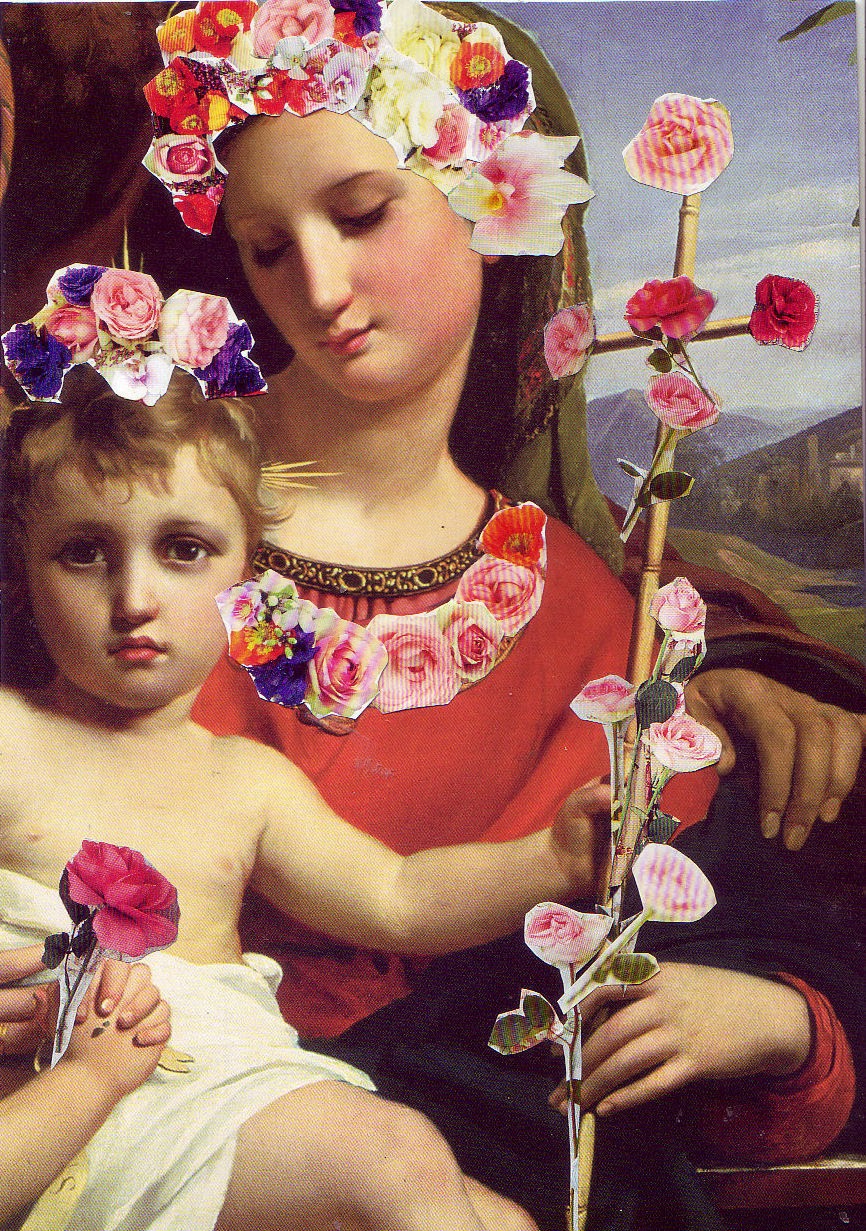 |
| Soulcollage images created by myself |
 |
| Image from www.bluehearttravel.com The body of St Terese of Lisiuex Notice the similarity in the flower wreath around the head |
| www.lifeinitaly.com Santa Chiara in Assisi |
The New Light
From the Underworld to the Next
The Journey Begins
This blog crept up to you from the vast echelons of the collective we like to call the internet. This is how it starts. They ask me to give you descriptions of what it is that is happening here, but who am I to try? I can’t, wait…No, it has nothing to do with what I believe I am capable of: I won’t, I will it not. However, I am not so stupid as to believe that this entry will evade being forced to represent the greater whole it forms part of, so I will allow that and maybe even embrace it, a little, for a while.
Great men are seldom spoken of and I do not wish to change that truth. In fact, what you will find offered here is always, probably, mystifying and sometimes maybe even disenchanting. This disenchantment will not be my fault, as you will see: here, I indulge in the moral frivolity of guilt not because I wish to apologise but rather because I would like to allude to, what I believe right now, is imminent.
I, here, believe that the words found in this entry will be demanded of to represent what is and what will be. I don’t actually care if it does or does not. I cannot express this better than a man we are best to be cautious of, if we trust what they say is best, but as you will see, I believe, I have little regard for what they say must be considered “best”.
What I am saying here is this: the reader of my blog is expecting a wall which does not want to be climbed to be constructed here. This is what we expect from any being which takes itself to be an authority or, in other words, human. They tell you that you are ruled by what they call nature and its “laws”. You must accept these laws to live well, live good. You must not fret at the insurmountable walls posed by its laws, there is no point in this, you are better off accepting it. Just accept it. Just accept that you are descended from apes and are ruled by the same, normal, natural, desires. Accept that two times two is four, it is the law of mathematics, do not bother challenging it.
But, we may ask, and here we encounter one of the men I would like to speak of against all good reason, what if…what if “I don’t happen to like those laws and that twice twice two is four?” Here, we encounter the “lazy devil” and he is not the laughing kind. A brooding, miserable, being who has very little consideration for what is “best” for him. We will encounter more of these men here, you can be sure, one may even say that this organisation you are, here, encountered with aspires to the heights of these type of men (and be sure that I, as do they, shed no regard for the “gender” here). However, caution to those who trust my words: what do I know? Indeed, I have caught myself listening to Nietzsche’s, another man we are best not to speak of, “malicious bird” who twitters: “What do you matter? What do you matter?”. Now, I hope you see, this wall does not care if you will to climb it or not, whether you will to believe that you may or not. If you will: do, be dared!
Now you know why I do not apologise and why I do not, here or anywhere, matter. I do not wish to place upon you the curse of law. This you may question, this you may vehemently disagree with: you demand this curse! “Well, so much the better”.Here, you are presented with an entry as a disgusting agreement with the man who wishes to dismiss nature and its laws as becoming “too human” becoming a calculable, necessary, path. We will find nothing as light as what they consider to be “best” here, we will not find humanity here. Instead, we will find wanderers such as the great Zarathustra who knew that: “There are a thousand paths that have never yet been trodden—a thousand healths and hidden isles of life. Even now, man and man’s earth are unexhausted and undiscovered.” Then, there is walking to do, then: let us walk!
I commit myself to the inhumanity of these dangerous men and in this you witness my siding with the promises of lovers. Here, you find me straying from The Path. Come one, come all, this is a sight appreciable to anyone: if you dare. This my journey from the underworld to the next! I start my journey with a parable, read it…my friends. Will love and be willed love:
“Wake and listen, you that are lonely! From the future come winds with secret wing-beats; and good tidings are proclaimed to delicate ears. You that are lonely today, you that are withdrawing, you shall one day be the people: out of you, who have chosen yourselves, there shall grow a chosen people and out of them, the overman. Verily, the earth shall yet become a site of recovery. And even now a new fragrance surrounds it, bringing salvation—and a new hope.” By: Friedrich Nietzsche. From: Thus Spoke Zarathustra: On The Gift-Giving Virtue: 2.
http://underworldandthenext.blogspot.com/ – you can subscribe by email
jai jai maa!
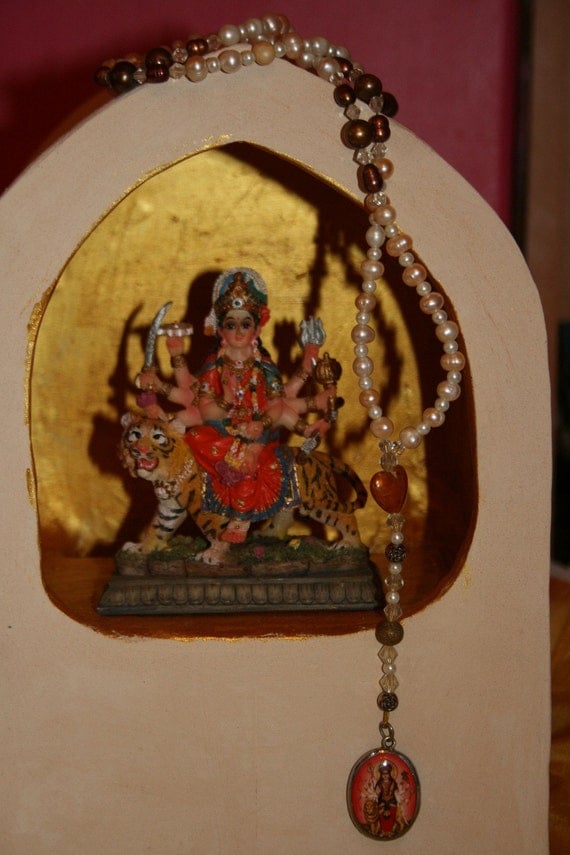
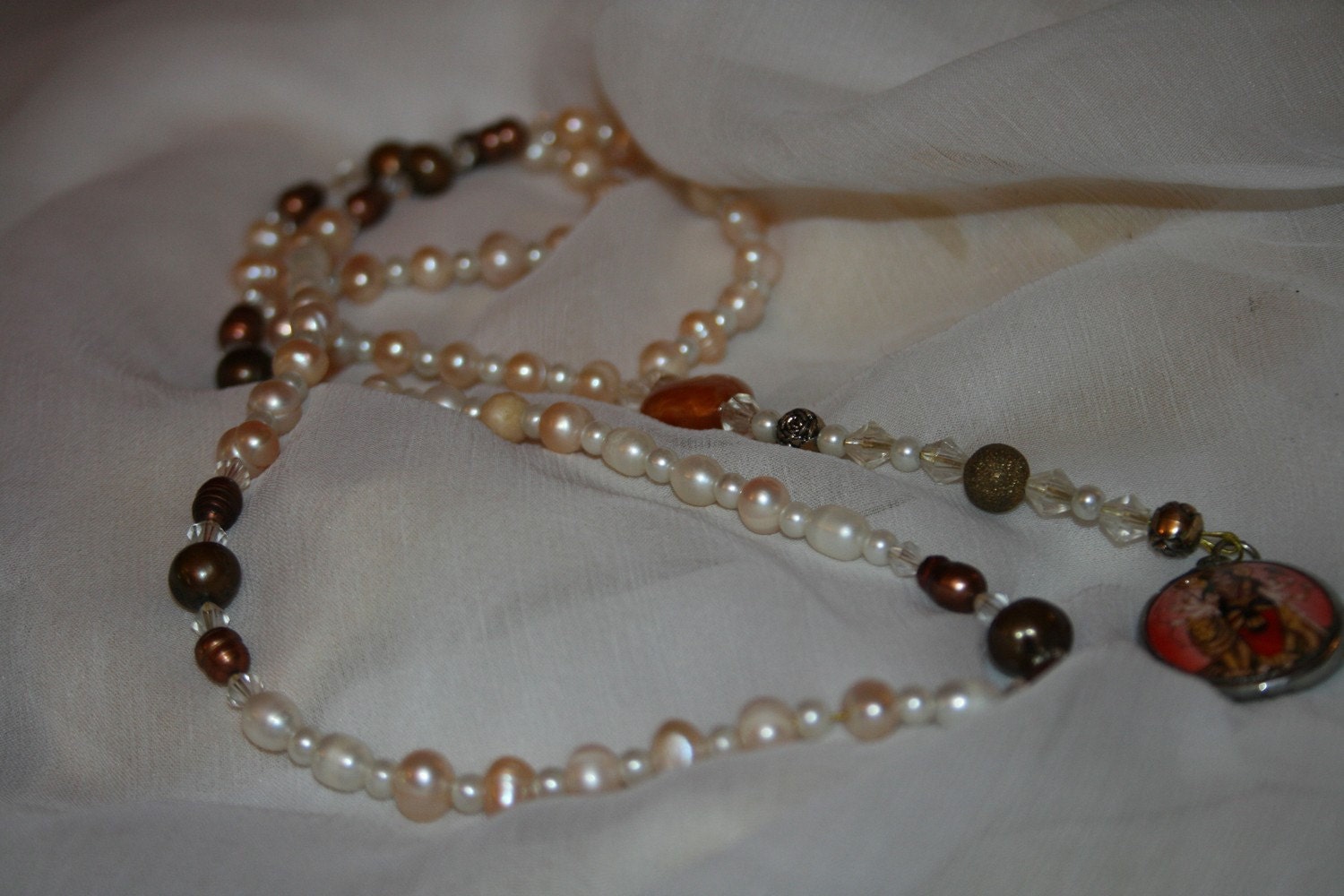
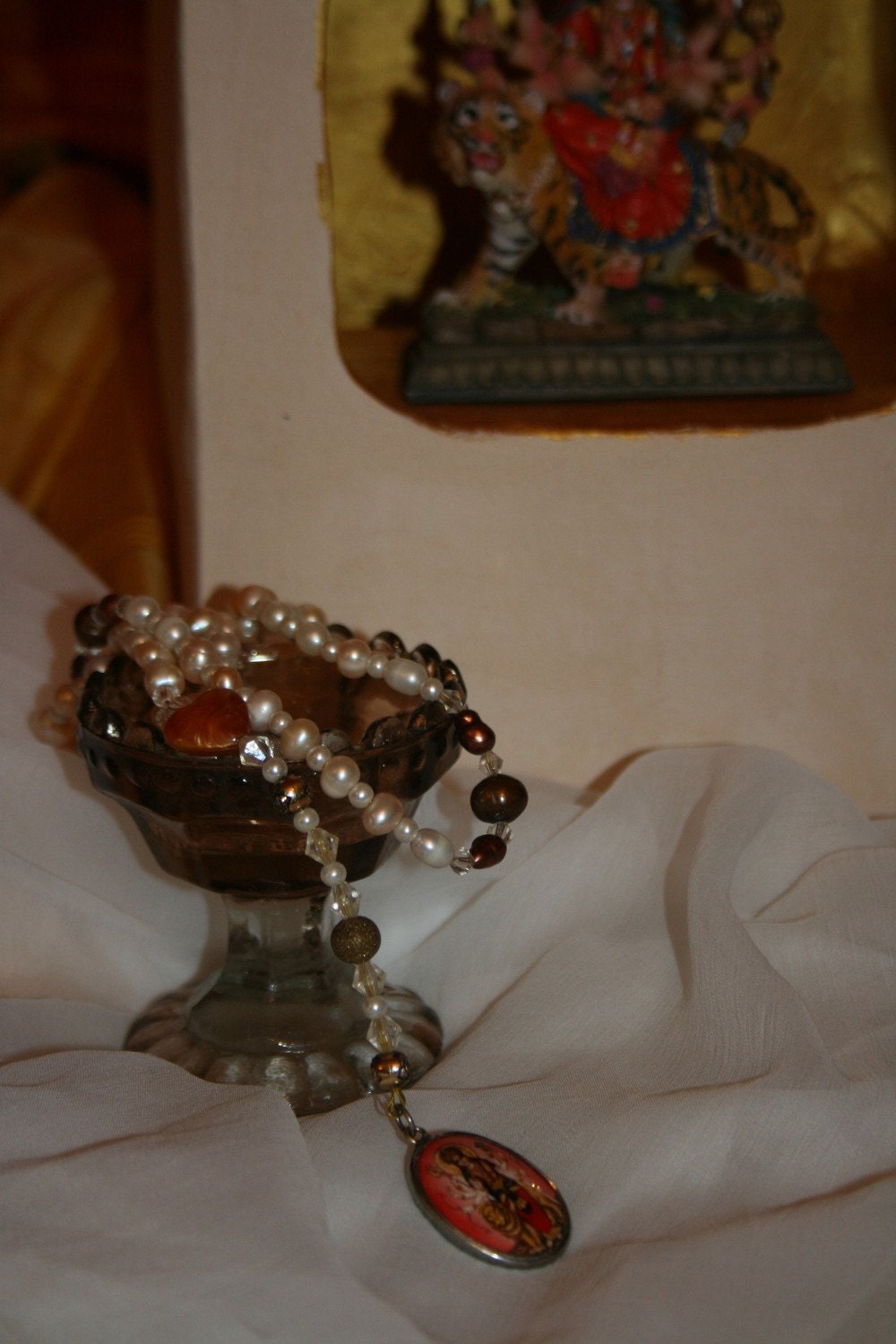
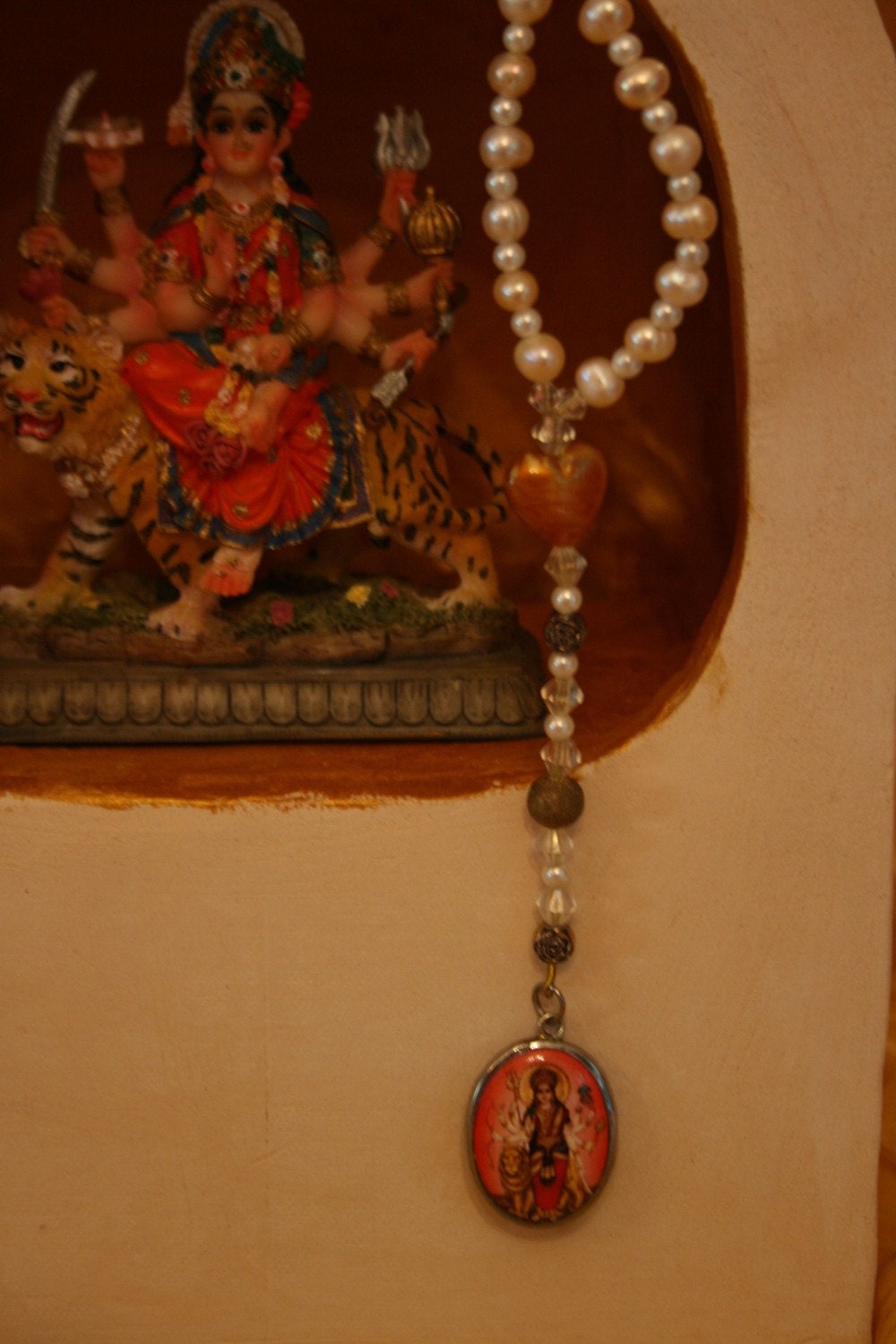
Holy Day of Our Lady of Lourdes
Anandamayi Ma

‘At dawn, we went by cycle rickshaws to the railway station. Even at that early hour, pilgrims flocked to the Ganges in a steady stream. Finally, hooting, with a cloud of smoke trailing overhead, the train from Varanasi pulled in, and screeched to a halt. Four young men in spotless white dhotis entered the first class compartment, and carried Ma out on a chair, to which four handles were attached. Ma looked fragile and delicate, wrapped in white cotton cloth. Her black, oiled hair fell over her shoulders. She looked at us with calm eyes. There was no reaction on her face, no sign of recognition of her devotees, many of whom she would have known for decades. She simply looked and her eyes moved slowly around the group. It was pleasant, and I had the strange feeling, that nobody was there behind those eyes. Inexplicably, tears started rolling down my cheeks. “That’s normal when one is touched by a great soul,” someone next to me reassured me. Indeed, I had the feeling that I had been touched by a very pure soul.
While waiting for Ma, we were singing bhajans or reciting the Hanuman Chalisa. Once, a girl of about 10 sat next to me. She sang full-throatedly, though a little out of tune. Listening to her, I liked her more and more. My heart was overflowing with love for her. Then the verandah door opened, and Anandamayi Ma appeared, supported by two women. Even before she reached the cot, she briefly stopped; half turned, and looked somewhat irritated in my direction. When she finally sat down on the cot, her glance settled on me for a long time. Yet this time, Ma’s glance did not strike me or induce any feeling. It seemed as if there was no centre that could have been struck. I simply looked back at her.
Probably Ma’s glance was attracted by the love that I felt for that girl, and probably she really did not perceive us as separate persons. After all, she often declared that it is a mistake to consider one as separate from others. However, almost certainly all of us, as we were sitting there on the verandah during her daily darshan, wished that she appreciated us personally. In addition, if we were honest, we most likely even wished that she appreciated our own person a little more than she appreciated the others.
However, Ma didn’t oblige. She was not consistent in her attention and affection. A genuine guru can see, even if his disciple can’t see it, that the ego is the culprit which makes life difficult. Naturally, he is not interested in flattering the ego and strengthening it – on the contrary. “The association with an enlightened being consists in getting blows to the ego,” Anandamayi Ma once remarked. My ego felt the blows. For example, when she didn’t look at me for long, and it reacted with heavy, resentful thoughts. It wanted to leave. On the other hand, I felt attracted to Ma, because I learnt around her almost effortlessly a new way of life – for example that everything is just right as it is.
“Trust in God. He certainly will look after you and all your affairs, if you really put full trust in Him, and if you dedicate all your energy to realise your self. You then can feel completely light and free,” Ma claimed and it sounded convincing. By ‘God,’ she meant the formless essence in everything. Nevertheless, this essence is not something abstract and cold. It is love, and can be experienced as the beloved. She also said, “You are always in His loving embrace.”
Extracted from www.lifepositive.com/spirit/gurus/the mother supreme
(Matri Darshan Ananda Mayi Ma).
La Feile Bride
St. Brigid’s church in Kildare was built on a site sacred to Brigid. Where Her eternal flame had once been tended by 19 priestesses, 19 nuns took it in turn to each tend the flame for a day and a night. On the 20th day, the Goddess (or the saint) tended the flame herself.
 |
| The Sacred Well and Shrine at Kildare |
An old poem stated; “Today is the day of Bride, The Serpent shall come from the hole.” An effigy of the serpent was often honoured in the ceremonies of this day, making it clear that Brighid had aspects as a serpent goddess. As the serpent sloughed its old skin and was renewed, so the land shook off winter to emerge restored; the snake symbolised the cycle of life. When Brighid’s cult was suppressed, then St Patrick had indeed banished the snakes [Pagans] from Ireland. However, Brighid’s popularity was so great that the church transformed her into a saint, allegedly the midwife of Christ and the daughter of a Druid who was converted to Christianity by St. Patrick, and who went on to found the Abbey of Kildare.
 |
| My painting of Bridgit |
Brighid was invited into the home by the woman of the house, in the form of a doll or corn dolly dressed in maiden white. Oracles were taken from the ashes of the hearth fire, which people examined for a sign that Brighid had visited, i.e. a mark that looked like a swan’s footprint. If found, it was considered a lucky omen. The swan was an ancient attribute of the goddess Brighid. Many Irish homes still have a Brighid’s cross hung up somewhere. This was originally a solar symbol.
A small community of Brigidine nuns are keeping the sacred light of Brigit burning at Solas Brihde in Kildare. I spent a week in Kildare, walking the pilgrimage of Bridgit, visiting her sacred well
| Carving of Bridgit milking a cow – on Tower of Michael, the Tor, Glastonbury A blessed La Feile Bride to you!!
|
But it is Saraswati’s humble mat on which sits wisdom.
The Goddess
This is the writing of Anna Franklin of www.merciangathering.com
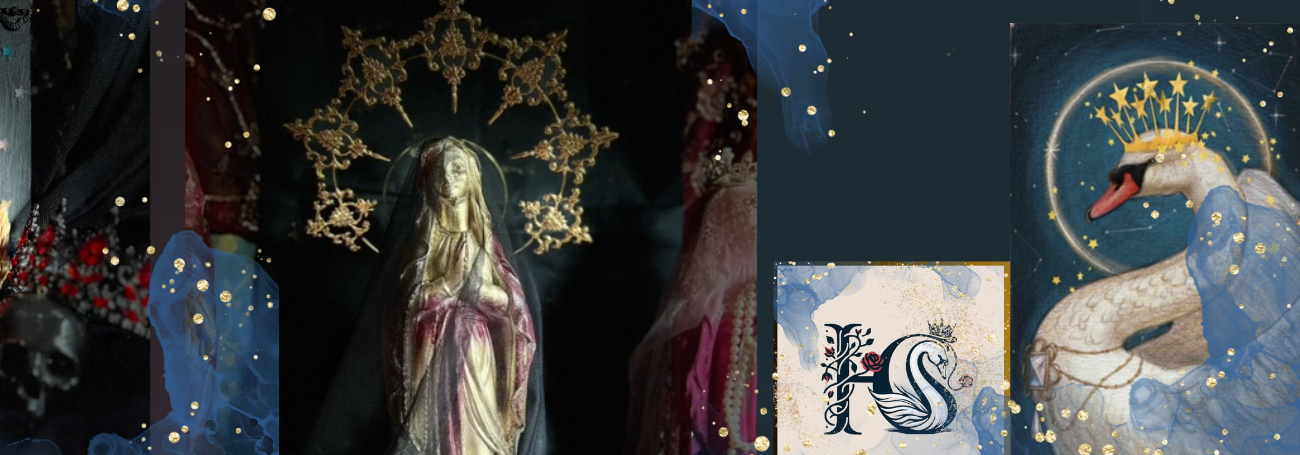












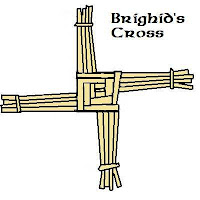


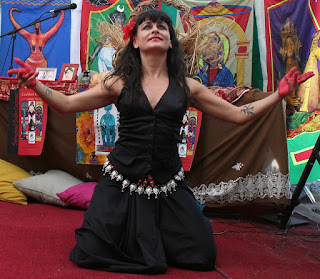.jpg)




